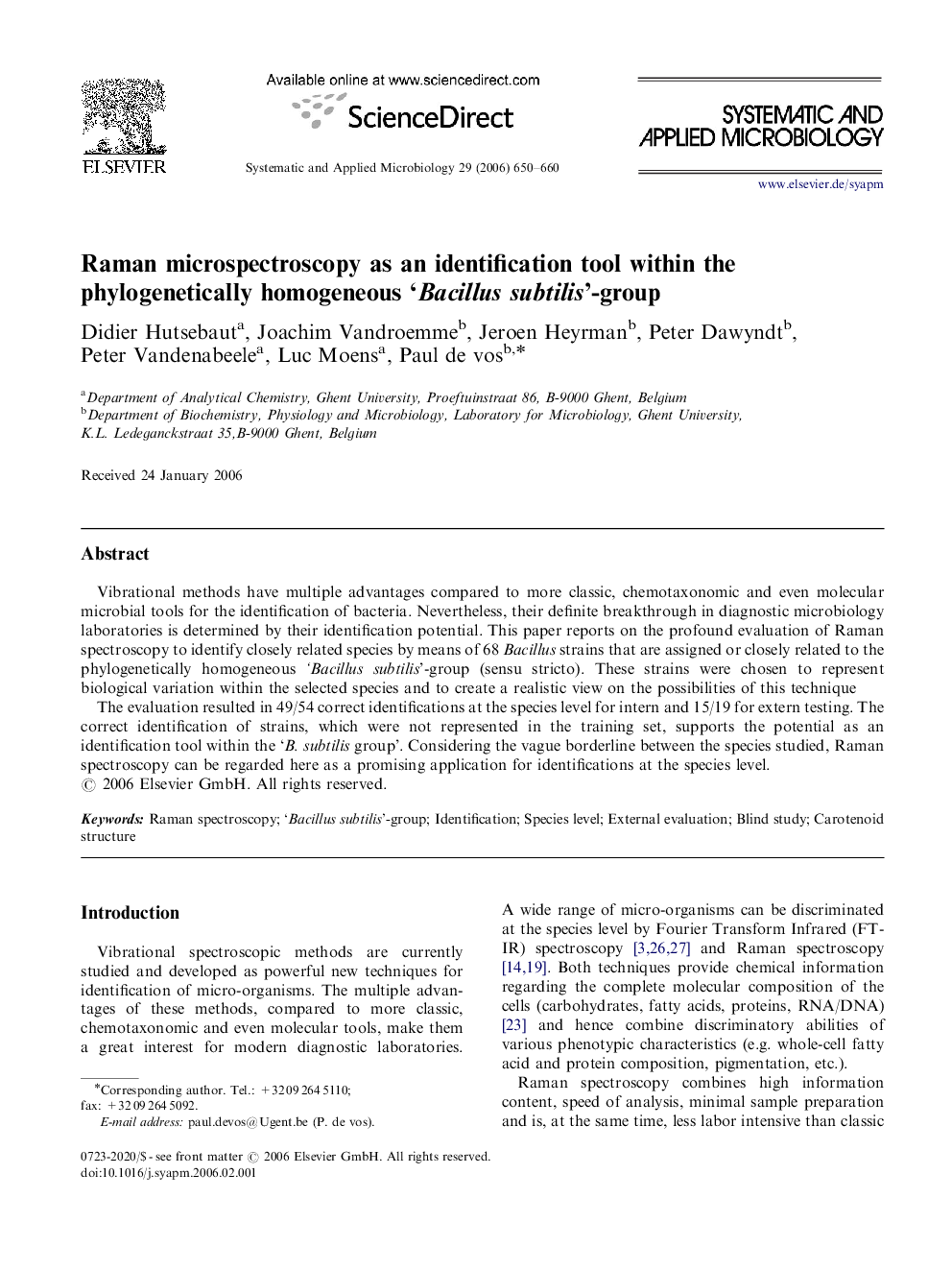| Article ID | Journal | Published Year | Pages | File Type |
|---|---|---|---|---|
| 2063548 | Systematic and Applied Microbiology | 2006 | 11 Pages |
Vibrational methods have multiple advantages compared to more classic, chemotaxonomic and even molecular microbial tools for the identification of bacteria. Nevertheless, their definite breakthrough in diagnostic microbiology laboratories is determined by their identification potential. This paper reports on the profound evaluation of Raman spectroscopy to identify closely related species by means of 68 Bacillus strains that are assigned or closely related to the phylogenetically homogeneous ‘Bacillus subtilis’-group (sensu stricto). These strains were chosen to represent biological variation within the selected species and to create a realistic view on the possibilities of this techniqueThe evaluation resulted in 49/54 correct identifications at the species level for intern and 15/19 for extern testing. The correct identification of strains, which were not represented in the training set, supports the potential as an identification tool within the ‘B. subtilis group’. Considering the vague borderline between the species studied, Raman spectroscopy can be regarded here as a promising application for identifications at the species level.
